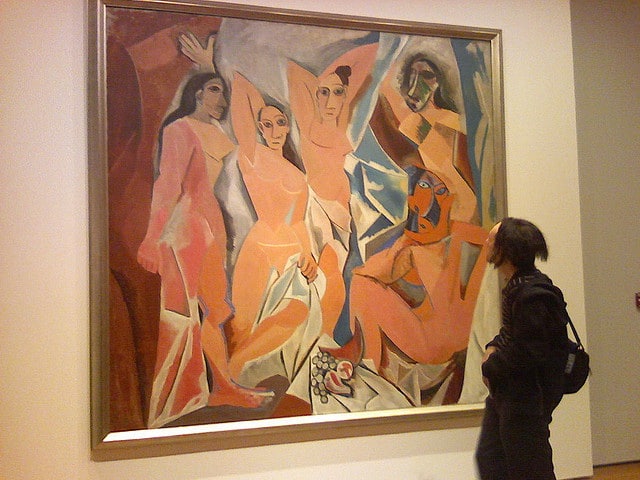Need to Feel a Sense of Reward? Try Looking at Art

We all love that feeling of accomplishment we get when we complete a project, overcome a challenge, or create something beautiful—but it’s not always easy to come by. When we’re feeling tired, demotivated, or depressed, it’s much more difficult to engage in the “work” part of the work and reward cycle our brains need to thrive.
Knowing how to stimulate feelings of reward and pleasure during such low periods is key to emerging from them as quickly as possible, and thanks to a new study by researchers at the Emory University School of Medicine, we now know there’s an easy way to accomplish this: Simply look at art.
The Emory study, which included four male volunteers and four females (all in their mid-twenties) revealed that there is something special about viewing art; it more strongly activates the brain’s “reward system” than other forms of pleasurable visual stimulation. When the researchers analyzed (via imaging technology) the brain activity of the study participants while viewing the works of Monet, Van Gogh, Picasso, and others, vs. while viewing photographs of similar subjects, they found that the brain’s ventral striatum (a part of the reward system) was more active while viewing the works of art.
According to senior author Krish Sathian, M.D., Ph.D., professor of neurology, rehabilitation medicine, and psychology, this part of the brain is already well-known for its involvement in obviously reward-seeking behaviours (such as addiction and gambling), working in conjunction with the orbitofrontal cortex to create what is known as the “reward circuit”. Interestingly, this area of the brain is also active during times of uncertainty; it plays a role in the decisions we make while under financial stress, for instance.
This study, which was supported by the State of Georgia, the National Institutes of Health, and the Veterans Administration, represents a departure from the usual research into how our brains appreciate art, which has typically been carried out from an aesthetic angle (i.e., figuring out how our brain reacts to art it deems “ugly” as compared to art it deems “attractive”). Such studies usually asked participants to assess art by rating its beauty on a scale of one to ten, and revealed that aesthetic preference is largely the result of activity in the amygdala, which is involved in emotional reactions, and parts of the orbitofrontal cortex.
Sathian describes the unique angle of the Emory study: “We took an independent approach. This paper hasn’t solved the problem of what art is. Rather, we can show that art does not activate just one process in the brain. There are a whole host of circuits involved.”
This angle was inspired by the work of marketing experts Henrik Hagtvedt of Boston College and Vanessa Patrick of University of Houston, who were present at the University of Georgia at the time of the study’s inception and aided the researchers throughout. Hagtvedt and Patrick were known for their efforts in investigating the effects of “art infusion,” in marketing—the “hows and whys” behind the inclusion of art in a product’s advertising or packaging making said product seem much more appealing to potential buyers.
According to Hagtvedt, who selected the images used in the study, “The art infusion effect is tied to the notion that art represents a distinct, universal and recognizable category of human behaviour. This category is not characterized by what is depicted, but by how it is depicted. Therefore, even art and non-art images with similar content should evoke different responses from viewers. The current study provides evidence that this is indeed the case.”
Participant preference was not a part of the Emory study at all; to avoid bias, the study subjects were not even asked if they liked what they saw, they simply viewed images (both paintings and photographs) whilst researchers scanned their brains (using functional magnetic resonance imaging, or fMRI), taking note of the various areas of activity stimulated therein. This unbiased assessment revealed that the brain regions that were stimulated by art images (rather than photographs) operated independently of those areas in the brain which were stimulated by aesthetic preference. In addition to the ventral striatum, the areas of the brain that were activated by art included the hypothalamus (part of the brain’s appetite regulation system) and the orbitofrontal cortex (which is involved in risk-taking, impulse control, and the processing of social rules).
According to research associate and first author Simon Lacey, Ph.D., “The thinking is that the reward circuit evolved to shape our brains’ decision making, to provide reinforcement when decisions turn out to be beneficial.”
“We find that the brain’s responses to art may have a connection to the reward circuit and perceptions of luxury or social status, independent of whether an individual rates the image in question highly.”
Those who are interested can find the full results of the Emory study online in the journal NeuroImage.
Image Credit: flickr.com/photos/the_tourist/498205257